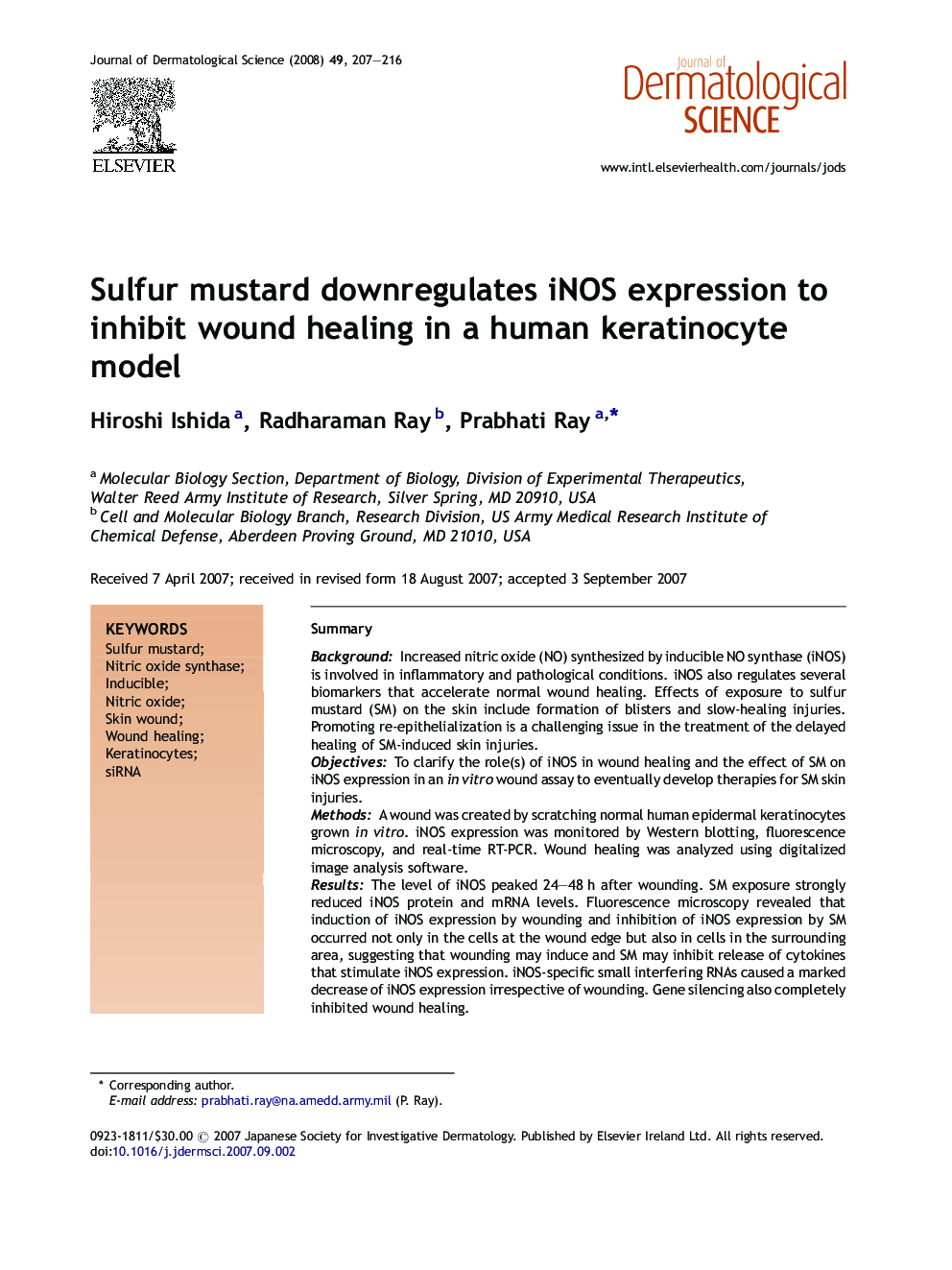| Article ID | Journal | Published Year | Pages | File Type |
|---|---|---|---|---|
| 3214227 | Journal of Dermatological Science | 2008 | 10 Pages |
SummaryBackgroundIncreased nitric oxide (NO) synthesized by inducible NO synthase (iNOS) is involved in inflammatory and pathological conditions. iNOS also regulates several biomarkers that accelerate normal wound healing. Effects of exposure to sulfur mustard (SM) on the skin include formation of blisters and slow-healing injuries. Promoting re-epithelialization is a challenging issue in the treatment of the delayed healing of SM-induced skin injuries.ObjectivesTo clarify the role(s) of iNOS in wound healing and the effect of SM on iNOS expression in an in vitro wound assay to eventually develop therapies for SM skin injuries.MethodsA wound was created by scratching normal human epidermal keratinocytes grown in vitro. iNOS expression was monitored by Western blotting, fluorescence microscopy, and real-time RT-PCR. Wound healing was analyzed using digitalized image analysis software.ResultsThe level of iNOS peaked 24–48 h after wounding. SM exposure strongly reduced iNOS protein and mRNA levels. Fluorescence microscopy revealed that induction of iNOS expression by wounding and inhibition of iNOS expression by SM occurred not only in the cells at the wound edge but also in cells in the surrounding area, suggesting that wounding may induce and SM may inhibit release of cytokines that stimulate iNOS expression. iNOS-specific small interfering RNAs caused a marked decrease of iNOS expression irrespective of wounding. Gene silencing also completely inhibited wound healing.ConclusionThese results suggest that preventing SM-induced inhibition of iNOS may be a prospective strategy to promote wound healing in SM-exposed skin.
